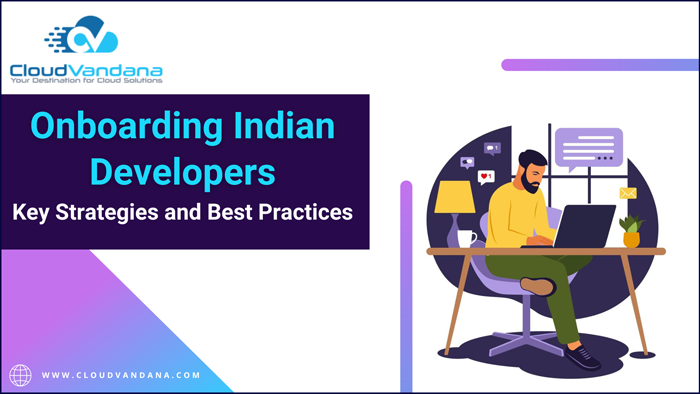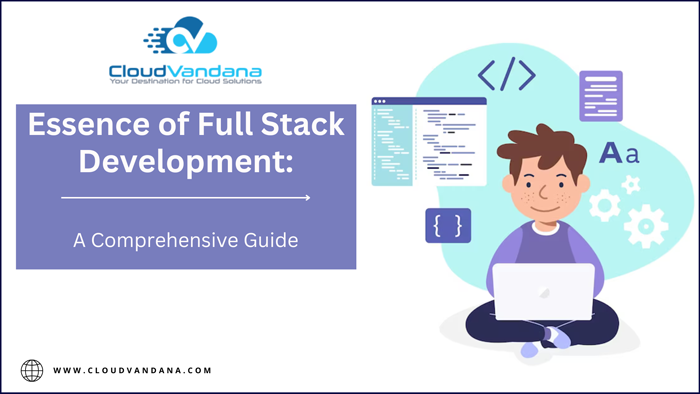Customize AI Effortlessly: Salesforce Einstein 1 Studio

Customization has emerged as the cornerstone of innovation in the rapidly evolving landscape of artificial intelligence (AI). Salesforce Inc. has recently taken a monumental leap forward with the launch of Salesforce Einstein 1 Studio, an innovative suite of low-code tools designed to redefine AI customization. Let’s delve deeper into the intricacies of this groundbreaking release and explore how it promises to revolutionize enterprise AI. Unveiling Salesforce Einstein 1 Studio: The Highlights The grand reveal of Einstein 1 Studio took center stage at TrailblazerDX, Salesforce’s prestigious annual developer conference. Amidst the buzz of innovation, the company showcased its commitment to harnessing the power of AI while forging deeper connections with enterprise data. Bridging the Gap: Einstein Copilot and Trusted Data At the core of Einstein 1 Studio lies the mission to bridge the gap between AI capabilities and enterprise data. Salesforce AI Chief Executive Clara Shih underscores the significance of Einstein Copilot’s foundation on trusted business data. Unlike consumer-oriented AI models trained on public datasets, Einstein Copilot leverages trusted enterprise data, ensuring reliability and integrity in AI-driven solutions. Exploring the Toolsets: A Closer Look at Einstein 1 Studio Einstein 1 Studio introduces three pivotal toolsets, each tailored to empower developers and administrators in their quest for AI customization: 1. Prompt Builder: Empowering Natural Language Interaction With the Prompt Builder, users can craft prompts using intuitive low-code natural language capabilities. This empowers developers and non-technical users to seamlessly interact with AI, eliminating the need for extensive technical expertise. The Prompt Builder facilitates swift and efficient communication with AI, driving enhanced user experiences across the board. 2. Copilot Builder: Tailoring AI to Business Needs In beta mode, the Copilot Builder empowers companies to tailor Einstein Copilot to suit their unique business requirements. Beyond traditional conversational AI, Copilot boasts advanced capabilities, including the execution of automated actions on behalf of users. Copilot Builder enables businesses to unlock the full potential of AI-driven automation from ticket completion to database record updates. 3. Model Builder: Flexibility and Integration Model Builder allows companies to select their preferred large language model (LLM), integrating seamlessly with third-party providers. Whether leveraging Salesforce’s offerings or integrating models from external providers like Google Cloud’s Vertex AI or OpenAI, developers can fine-tune models using trusted enterprise data within secure enclaves. Embracing the Future: The Transformative Potential of AI Alice Steinglass, Executive Vice President and General Manager of Salesforce Platform, emphasizes the transformative impact of AI customization. Beyond revolutionizing application development, AI opens new horizons for developers, enabling real-time interactions with customers and dynamic actions at runtime. Ensuring Security and Privacy: The Einstein 1 Advantage Einstein 1 Studio prioritizes data security and privacy, offering robust measures such as data masking, audit trails, and enhanced privacy protocols. Businesses benefit from the full spectrum of Einstein 1 platform capabilities even when integrating external models. Conclusion: Charting the Course for Enterprise AI Salesforce‘s Einstein 1 Studio heralds a new era of AI customization, empowering businesses to unlock AI’s full potential within their operations. As organizations embrace AI’s transformative power, Einstein 1 Studio stands as a beacon of innovation, driving progress and redefining the future of enterprise AI. The journey towards AI-driven excellence has just begun. Are you ready to embark on this transformative voyage with Einstein 1 Studio? CloudVandana, a distinguished Salesforce partner in India, offers unparalleled expertise and seamless integration through Salesforce Einstein 1 Studio. Their commitment to innovation and customer satisfaction empowers businesses to customize AI effortlessly, revolutionizing how they engage with their data and customers. CloudVandana is a beacon of excellence in Salesforce solutions, driving business success and growth across industries. Call Now. Request a Free Consultation YOU MIGHT ALSO LIKE
Onboarding Indian Developers: Key Strategies and Best Practices

Welcome to the world of software development, where talent knows no boundaries! If you’re looking to onboard Indian developers, you’re stepping into a pool of diverse skill sets and vibrant cultures. This guide will walk you through simple yet effective strategies for seamlessly onboarding Indian developers. In today’s globalized world, remote work has become increasingly prevalent, allowing companies to tap into talent pools from around the globe. India, in particular, has emerged as a hotspot for skilled developers, offering a vast pool of talent with diverse expertise and competitive rates. However, successfully onboarding Indian developers requires more than just hiring them; it involves understanding their cultural nuances, communication styles, and professional expectations. In this blog, we’ll explore key strategies and best practices for effectively onboarding Indian developers. Benefits Of Hiring Indian Developers: Hierarchy and Respect: Indian culture strongly emphasizes hierarchy and respect for authority. Establishing clear lines of communication and respect within the team ensures that Indian developers feel valued and respected for their contributions. Work-Life Balance: While Indian developers are known for their dedication and hard work, they also value work-life balance. Offering flexible work arrangements and promoting a healthy work culture can help foster productivity and job satisfaction among Indian developers. Clear Expectations: Clearly outline project objectives, timelines, and expectations from the outset. Providing detailed documentation and regular updates can help Indian developers effectively align their efforts with organizational goals. Regular Check-Ins: Schedule regular check-in meetings to provide feedback, address concerns, and ensure Indian developers feel supported and engaged. These meetings can also serve as opportunities to clarify misunderstandings and foster camaraderie within the team. Utilize Multiple Communication Channels: Indian developers may feel more comfortable communicating through written channels such as email or instant messaging. However, it’s essential to accommodate their preferences while also utilizing video calls or voice chats for more personal interactions. Language Considerations: While English is widely spoken in India, some developers may feel more comfortable communicating in their native language, especially during informal discussions. Encouraging language diversity and providing translation support can help bridge communication gaps. Understanding Time Zones: India operates on Indian Standard Time (IST), which can differ significantly from other time zones. Being mindful of time differences and accommodating flexible work hours can ensure effective collaboration and minimize disruptions. Professional Development: Training and Upskilling: Invest in training programs and resources to help Indian developers enhance their skills and stay updated with the latest technologies. Providing opportunities for professional development can not only benefit individual developers but also contribute to the overall success of the team. Mentorship Programs: Pair Indian developers with experienced mentors within the organization to facilitate knowledge transfer and skill development. Mentorship programs can provide valuable guidance and support, helping developers navigate their roles more effectively. Recognition and Rewards: Recognize and appreciate the contributions of Indian developers through rewards, bonuses, or public acknowledgment. Celebrating their achievements can boost morale and motivation, fostering a positive work environment conducive to growth and innovation. Team Collaboration: Promote Diversity and Inclusion: Encourage collaboration and teamwork among developers from diverse backgrounds, fostering creativity and innovation. Embrace different perspectives and cultural insights to drive collective success and achieve common goals. Cross-Cultural Training: Provide cross-cultural training to help team members understand and appreciate each other’s cultural differences. Building cultural awareness can facilitate smoother interactions and mitigate potential conflicts arising from misunderstandings. Encourage Knowledge Sharing: Create platforms and forums for Indian developers to share their expertise, insights, and best practices with colleagues. Encouraging knowledge sharing can foster a culture of continuous learning and collaboration within the team. Conclusion: Successfully onboarding Indian developers requires a combination of cultural sensitivity, effective communication, and investment in their professional development. By understanding and accommodating their cultural nuances, providing clear expectations, and fostering a collaborative work environment, companies can harness the full potential of Indian talent and drive innovation and growth. Embracing diversity and inclusivity while promoting continuous learning and development are key pillars of effective onboarding strategies for Indian developers in today’s globalized landscape. By following these best practices, organizations can build strong, cohesive teams that thrive in an increasingly interconnected world. Are you looking for skilled Indian developers for your projects? As CloudVandana continues to uphold its integrity, excellence, and collaboration values, it remains at the forefront of empowering businesses with top-tier talent from India, driving sustainable growth, and fostering lasting partnerships across borders. With CloudVandana as a trusted partner, companies can confidently navigate the complexities of staff augmentation, experience the full potential of Indian developers, and achieve unparalleled success in today’s competitive market. Call us today to hire the best talent. Request a Free Consultation YOU MIGHT ALSO LIKE
Salesforce Einstein Prediction Builder: Your Guide to Predictive Success

Explore the power of predictive analytics with Salesforce Einstein Prediction Builder. Create custom predictions tailored to your business needs and drive more intelligent decision-making. Start leveraging your data to forecast outcomes and optimize processes today. Nowadays, businesses thrive on insights derived from data analysis to make informed decisions and stay ahead of the competition. With the advent of artificial intelligence (AI) and machine learning (ML), organizations are leveraging predictive analytics to anticipate customer behavior, optimize processes, and drive growth. Among the plethora of tools available, Salesforce Einstein Prediction Builder stands out as a robust platform that empowers businesses to harness the power of predictive modeling directly within the Salesforce ecosystem. In this comprehensive guide, we delve into the intricacies of Salesforce Einstein Prediction Builder, exploring its capabilities, applications, and benefits in transforming businesses through predictive analytics. Understanding Salesforce Einstein Prediction Builder Salesforce Einstein Prediction Builder is an AI-powered tool integrated into the Salesforce Customer 360 platform. It enables businesses to build custom predictive models without extensive data science expertise. It empowers users to analyze historical data, identify patterns, and predict outcomes to drive more intelligent decision-making processes. Key features of Salesforce Einstein Prediction Builder include: Point-and-Click Interface: Prediction Builder offers a user-friendly, point-and-click interface that allows users to create predictive models without writing complex code. This democratizes predictive analytics, making it accessible to business users across various departments. Integration with Salesforce Data: Prediction Builder integrates with Salesforce data, including standard and custom objects, enabling organizations to leverage their existing data infrastructure for predictive modeling. Automated Model Training: Einstein Prediction Builder automates the model training process, eliminating the need for manual intervention. It analyzes historical data, selects relevant features, and trains the model to predict future outcomes accurately. Predictive Scoring: Once the model is trained, Prediction Builder generates predictive scores for individual records within Salesforce, providing actionable insights that drive personalized customer interactions and informed business decisions. Applications of Salesforce Einstein Prediction Builder The versatility of Salesforce Einstein Prediction Builder enables organizations across industries to leverage predictive analytics for a wide range of applications, including: Sales Forecasting: Businesses can use Prediction Builder to accurately forecast future sales opportunities by analyzing historical sales data and market trends. This enables sales teams to prioritize leads, allocate resources effectively, and optimize sales strategies for maximum impact. Customer Churn Prediction: Prediction Builder helps organizations identify customers at risk of churning by analyzing past behavior, engagement patterns, and demographic data. With this insight, businesses can proactively engage at-risk customers with targeted retention campaigns and personalized offers. Lead Scoring and Prioritization: With Prediction Builder, businesses can develop lead-scoring models based on historical conversion data. This allows sales teams to focus on high-value leads with the greatest likelihood of conversion, enhancing efficiency and maximizing ROI on sales and marketing initiatives. Product Recommendations: Prediction Builder enables businesses to deliver personalized product recommendations tailored to individual preferences and interests by analyzing customer purchase history and browsing behavior. This enhances the customer experience and drives upsell and cross-sell opportunities. Optimized Marketing Campaigns: Prediction Builder empowers marketers to segment audiences based on predictive insights, allowing for more targeted and relevant marketing campaigns. Organizations can improve campaign performance and drive higher conversion rates by delivering the right message to the right audience at the right time. Building Predictive Models with Salesforce Einstein Prediction Builder Creating a predictive model with Salesforce Einstein Prediction Builder involves the following steps: Data Preparation: The first step is to gather and prepare the historical data required for model training. This involves identifying relevant datasets, cleaning and transforming the data, and ensuring data quality and consistency. Feature Selection: Prediction Builder automatically analyzes the available data and selects relevant features (variables) likely to influence the predicted outcome. Users can manually choose additional features based on domain expertise and business requirements. Model Training: Prediction Builder automatically trains a predictive model using advanced machine learning algorithms once the data and features are selected. The model learns from historical data patterns and identifies correlations between input variables and the target outcome. Evaluation and Validation: After training the model, it is essential to evaluate its performance and accuracy using validation datasets. This helps ensure the model generalizes unseen data well and produces reliable predictions in real-world scenarios. Deployment and Integration: Once the predictive model is validated, it can be deployed into production within the Salesforce environment. Prediction Builder seamlessly integrates with Salesforce workflows, allowing users to leverage predictive insights directly within their day-to-day operations. Benefits of Salesforce Einstein Prediction Builder The adoption of Salesforce Einstein Prediction Builder offers several compelling benefits for businesses: Increased Revenue and ROI: By leveraging predictive analytics to optimize sales, marketing, and customer engagement strategies, organizations can drive increased revenue and maximize return on investment. Improved Decision Making: Prediction Builder provides actionable insights that enable more informed decision-making across all levels of the organization. Whether it’s identifying high-potential leads or mitigating customer churn, predictive analytics empowers businesses to stay ahead of the curve. Enhanced Customer Experience: By delivering personalized experiences and recommendations, organizations can enhance customer satisfaction and loyalty. Prediction Builder enables businesses to anticipate customer needs and preferences, fostering stronger relationships and brand advocacy. Operational Efficiency: Prediction Builder helps improve operational efficiency and resource allocation by automating repetitive tasks and streamlining processes. This lets employees focus on high-value activities that drive business growth and innovation. Competitive Advantage: In today’s competitive landscape, organizations that embrace predictive analytics gain a significant competitive advantage. Prediction Builder enables businesses to anticipate market trends, adapt to changing customer preferences, and stay ahead of the competition. Conclusion Salesforce Einstein Prediction Builder represents a paradigm shift in how businesses leverage data to drive growth and innovation. Prediction Builder empowers organizations to unlock valuable insights, optimize processes, and deliver exceptional customer experiences by democratizing predictive analytics and putting AI’s power in business users’ hands. As businesses embrace digital transformation and prioritize data-driven decision-making, Salesforce Einstein Prediction Builder emerges as a transformative tool that enables organizations to thrive in an increasingly complex and dynamic marketplace. By harnessing
The Secrets to Building an Effective Remote Team

In an era where remote work is becoming increasingly prevalent, building and managing an effective remote team has become a critical aspect of modern business operations. Organizations transitioning to distributed work environments face unique challenges in maintaining productivity, cohesion, and communication among team members. However, with the right strategies and tools, building a successful remote team is possible and can yield numerous benefits for both employees and employers. Building an Effective Remote Team Embrace a Remote-Friendly Culture Creating a remote-friendly culture is essential for fostering a sense of belonging and collaboration among team members, regardless of their physical location. Here are some fundamental principles to consider: Clear Communication Channels: Establishing clear communication channels is vital to ensuring team members can easily connect and collaborate. Use tools like Slack, Microsoft Teams, or Discord for real-time messaging and project discussions. Transparency and Trust: Foster an environment of openness and trust by informing team members about company updates, project progress, and expectations. Encourage open communication and provide avenues for feedback. Flexibility and Autonomy: Remote work offers employees greater flexibility and autonomy over their schedules. Empower your team members to manage their time effectively while meeting deadlines and deliverables. Prioritize Effective Collaboration Building a cohesive and collaborative remote team requires deliberate efforts to overcome geographical barriers and time zone differences. Here are some strategies to facilitate effective collaboration: Regular Team Meetings: Schedule meetings to discuss project updates, address challenges, and brainstorm ideas. Utilize video conferencing tools like Zoom or Google Meet to facilitate face-to-face interactions. Virtual Team Building Activities: Organize virtual team building activities to strengthen relationships and foster camaraderie among team members. Activities such as virtual escape rooms, online trivia, or virtual happy hours can help bridge the gap created by remote work. Project Management Tools: Implement robust tools such as Asana, Trello, or Jira to streamline workflows, assign tasks, and track progress. These tools help ensure accountability and visibility across distributed teams. Cultivate a Positive Work Environment A positive work environment is essential for maintaining team morale and productivity in a remote setting. Here are some strategies to promote well-being and engagement: Encourage Work-Life Balance: Remote work blurs professional and personal life boundaries. Encourage your team members to establish healthy work-life boundaries and prioritize self-care. Provide Professional Development Opportunities: Invest in the professional development of your remote team members by offering training programs, workshops, and skill-building resources. Encourage continuous learning and growth. Celebrate Achievements: Recognize and celebrate the achievements and milestones of your remote team members. Whether it’s a project completion, a successful launch, or a work anniversary, acknowledgment and appreciation foster motivation and loyalty. Leverage Technology and Tools Technology is pivotal in enabling remote teams to collaborate effectively and stay productive. Here are some essential tools and technologies to consider: Cloud-Based Collaboration Tools: Utilize cloud-based collaboration tools such as Google Workspace or Microsoft Office 365 for seamless document sharing, editing, and real-time collaboration. Video Conferencing and Screen Sharing: Leverage video conferencing platforms like Zoom or Microsoft Teams for virtual meetings, presentations, and screen-sharing sessions. Video communication helps foster a sense of connection and engagement among remote team members. Virtual Whiteboarding Tools: Explore virtual whiteboarding tools like Miro or MURAL for visual brainstorming, creativity, and collaborative problem-solving. These tools mimic the experience of physical whiteboards and enable teams to capture ideas and concepts in a digital format. Foster Continuous Improvement Building an effective remote team is an ongoing process that requires continuous assessment, adaptation, and improvement. Here are some strategies to foster continuous improvement: Solicit Feedback: Regularly solicit feedback from your remote team members regarding their work experience, challenges, and suggestions for improvement. Listen to their input and incorporate actionable insights into your team management strategies. Performance Evaluation and Recognition: Implement a transparent performance evaluation process to assess the contributions and achievements of remote team members. Provide constructive feedback and recognize outstanding performance through formal evaluations and informal praise. Iterate and Iterate: Embrace a culture of experimentation and iteration by testing new processes, tools, and approaches to remote work. Be open to learning from successes and failures and adapt your strategies accordingly. In conclusion, building an effective remote team requires clear communication, collaboration, a positive work culture, and leveraging technology. By prioritizing these elements and embracing remote work as a core aspect of your organizational culture, you can empower your team members to thrive in a distributed work environment while driving productivity and success for your business. Are you in need of skilled remote developers to boost your organization’s productivity? Reach out to CloudVandana for access to an expert team ready to enhance your projects in various technologies. Call Now. Request a Free Consultation YOU MIGHT ALSO LIKE
CV Files-File Management App in Salesforce AppExchange

CV Files is a testament to innovation and efficiency in file management App within Salesforce. As a robust file management solution on the Salesforce AppExchange, CV Files redefines how organizations handle their documents. It facilitates seamless integration with Google Drive and offers various features tailored to enhance productivity and collaboration. CV Files-File Management App Streamlined Document Management CV Files simplifies document management by seamlessly integrating Google Drive with Salesforce. Users can store, access, and manage files directly within Salesforce, eliminating the need to switch between platforms and streamlining workflows. Key Features Centralized File Repository: CV Files provides a centralized repository for all documents related to Salesforce records. This enables users to access files effortlessly without leaving the Salesforce interface. Automated File Syncing: Files associated with Salesforce records are automatically synced with Google Drive, ensuring data consistency and eliminating manual file uploads. This automation saves time and reduces the risk of errors. Granular Access Controls: CV Files offers granular access controls, allowing administrators to define who can view, edit, and share files within Salesforce. This helps maintain data security and compliance with organizational policies. Real-time Collaboration: With CV Files, teams can collaborate on documents in real time, fostering collaboration and enhancing productivity. Users can share files, leave comments, and track changes directly within Salesforce, enabling seamless collaboration across teams and departments. Version Control: CV Files includes version control capabilities, allowing users to track changes and revert to previous versions of documents if needed. This ensures data integrity and helps prevent accidental data loss or corruption. Benefits for Organizations Increased Productivity: CV Files streamlines document management processes, enabling users to find and access files quickly and efficiently. Enhanced Collaboration: Real-time collaboration features facilitate seamless communication and collaboration among team members, driving productivity and innovation. Improved Data Security: Granular access controls and encryption mechanisms ensure that sensitive data remains secure and compliant with industry regulations. Scalability: CV Files is highly scalable and can accommodate the growing needs of organizations of all sizes and industries. Integration Flexibility: CV Files seamlessly integrates with Google Drive and can be customized to meet the requirements of different business processes and workflows. In conclusion, CV Files is a powerful file management application that redefines how organizations handle their documents within Salesforce. With its seamless integration, robust features, and numerous benefits, CV Files empowers organizations to streamline document management processes, enhance collaboration, and drive productivity. As a trusted solution on the Salesforce AppExchange, CV Files continues revolutionizing file management for businesses worldwide. Visit CV Files or connect with us for a detailed discussion. Request a Free Consultation YOU MIGHT ALSO LIKE
Essence of Full Stack Development: A Comprehensive Guide

In the fast-paced world of technology, Full-Stack Development has emerged as a pivotal skill set, allowing developers to craft entire applications from start to finish. As the demand for versatile developers continues to soar, understanding the intricacies of Full-Stack Development becomes increasingly essential. This comprehensive guide delves into the core concepts, benefits, and strategies underpinning Full-Stack Development. Understanding Full Stack Development: Full Stack Development refers to proficiency in front-end and back-end technologies, enabling developers to build robust, scalable, and dynamic web applications. It encompasses a broad spectrum of skills, including but not limited to HTML, CSS, JavaScript, front-end frameworks (e.g., React, Angular, Vue.js), server-side scripting languages (e.g., Node.js, Python, Ruby), and databases (e.g., SQL, NoSQL). The Role of Front-End Development: Front-end development focuses on creating web applications’ visual elements and user interfaces. It involves translating design mockups into interactive and responsive web pages using HTML, CSS, and JavaScript. Front-end frameworks like React, Angular, and Vue.js streamline development by offering pre-built components and efficient data-binding capabilities. The Significance of Back-End Development: Back-end development involves server-side programming and database management, enabling web applications’ functionality and data persistence. Developers utilize server-side scripting languages like Node.js, Python (with frameworks like Django or Flask), or Ruby on Rails to handle business logic, process requests, and interact with databases. Databases store and manage application data effectively, whether relational (e.g., MySQL, PostgreSQL) or non-relational (e.g., MongoDB, Firebase). The Integration of APIs: Application Programming Interfaces (APIs) facilitate seamless communication and data exchange between software systems. Full-stack Developers leverage third-party APIs and create custom APIs to enhance the functionality and interoperability of their applications. RESTful APIs, GraphQL, and SOAP APIs are commonly used to build robust and scalable web services. Key Advantages of Full Stack Development: Versatility: Full Stack Developers possess a diverse skill set, allowing them to work on both client-side and server-side components of applications. Efficiency: By understanding the entire development stack, Full Stack Developers can optimize performance, troubleshoot issues, and deliver end-to-end solutions effectively. Cost-effectiveness: Employing Stack Developers reduces the need to hire multiple specialists, thereby streamlining project management and reducing overall development costs. Rapid Prototyping: Full Stack Developers can swiftly prototype and iterate on ideas, accelerating the development cycle and enhancing time-to-market. Enhanced Collaboration: Full-stack developers can seamlessly collaborate with designers, front-end developers, and system administrators, fostering synergy and innovation within development teams. Best Practices in Full Stack Development: Continuous Learning: Given the dynamic nature of technology, Full Stack Developers must stay abreast of emerging trends, frameworks, and best practices. Modular Design: Adopting a modular and component-based approach enables project code reusability, maintainability, and scalability. Version Control: Leveraging version control systems like Git ensures effective collaboration, code management, and seamless deployment workflows. Testing and Debugging: Implementing robust testing methodologies (unit tests, integration tests, end-to-end tests) and debugging techniques enhances code quality and reliability. Documentation: Comprehensive documentation facilitates knowledge sharing, onboarding, and future maintenance of projects, ensuring long-term sustainability. Conclusion: In conclusion, Full Stack Development epitomizes the convergence of front-end and back-end technologies, empowering developers to conceive, build, and deploy sophisticated web applications. By mastering the art of full-stack development and adhering to best practices, developers can unlock endless possibilities, drive innovation, and shape tomorrow’s digital landscape. Embrace the journey of Full Stack Development and embark on a transformative voyage towards technical excellence and creativity. CloudVandana has delved into the multifaceted world of full-stack development, providing a comprehensive guide that navigates its various layers and technologies. By embracing the essence of full-stack development, CloudVandana equips developers with the tools and knowledge necessary to build robust, scalable, and innovative solutions in today’s digital age. Schedule a call with us today and share your requirements with us. Request a Free Consultation YOU MIGHT ALSO LIKE
Backend Languages: Pick the Perfect Framework for Your Project

In software development’s expansive domain, backend languages are the cornerstone, orchestrating the server-side logic that powers web applications. Selecting the most suitable backend language for a project can be daunting among many options. This exploration aims to dissect backend languages, shedding light on their nuances, strengths, weaknesses, and applicability across diverse projects. Understanding Backend Languages: Backend languages serve as the bedrock for crafting the server-side logic of web applications, executing pivotal tasks such as database interactions, authentication, and business logic. These languages process client requests, execute requisite operations, and furnish user browser responses. Among the array of backend languages, Python, JavaScript (Node.js), Ruby, Java, and PHP emerge as popular choices, each possessing unique features and capabilities. Python: Renowned for its simplicity, readability, and extensive library support, Python is a favored choice for backend development. With frameworks like Django and Flask, Python offers robust tools for crafting scalable web applications. Moreover, Python’s versatility extends beyond web development, finding applications in data science, machine learning, and automation. JavaScript (Node.js): Node.js heralds a paradigm shift by enabling the use of JavaScript on the server side, facilitating full-stack JavaScript development. Its event-driven architecture and non-blocking I/O render it well-suited for real-time applications and high-concurrency scenarios. Express.js, a prominent framework, simplifies building RESTful APIs and web servers with Node.js. Ruby: Ruby, characterized by its elegant syntax and developer-friendly environment, forms the backbone of the Ruby on Rails framework. Rails emphasizes convention over configuration, streamlining the development process and enhancing code maintainability. While Ruby on Rails excels in rapid prototyping and web application development, performance concerns may arise in high-traffic systems. Java: Java‘s robustness, platform independence, and strong typing position it as a stalwart in enterprise-level backend development. Supported by frameworks like Spring Boot, Java offers comprehensive tools for crafting scalable, production-ready applications. Its performance and scalability make it ideal for large-scale systems and mission-critical applications. PHP: Tailored initially for server-side scripting, PHP dominates most of the web, particularly in content management systems (CMS) like WordPress and Drupal. While PHP boasts ease of deployment and a vast ecosystem of pre-built modules, concerns regarding code consistency and security vulnerabilities persist. Go (Golang): Google conceived Go, which prioritizes simplicity, performance, and concurrency. This makes it an enticing option for backend services and microservices. Go’s static typing, built-in concurrency primitives, and efficient garbage collection enhance its suitability for high-performance applications. Its simplicity and robust standard library streamline the development and deployment of backend systems. Considerations for Choosing a Backend Language: Several factors warrant consideration when selecting a backend language. Performance requirements, ecosystem maturity, scalability potential, team familiarity, and security considerations are pivotal in decision-making. By aligning these factors with project requirements and long-term goals, developers can make informed decisions that set the stage for a successful development journey. Conclusion: Choosing the appropriate backend language is a foundational decision that significantly influences web applications’ scalability, performance, and maintainability. By comprehending each language’s strengths and limitations, developers can confidently navigate the labyrinth of backend languages. Whether opting for Python’s simplicity, JavaScript’s versatility, or Go’s performance prowess, selecting the correct backend language lays the groundwork for a fruitful development expedition. With its robust features and strong community support, CloudVandana promises to streamline development, optimize performance, and ensure scalability. By leveraging its strengths, CloudVandana is well-positioned for success in building a robust backend infrastructure for its project. Call Now for more assistance. Request a Free Consultation YOU MIGHT ALSO LIKE
How AI is Revolutionizing The Future Of Recruitment

In today’s dynamic job market, where talent acquisition is a strategic imperative for organizations, the role of artificial intelligence (AI) in reshaping recruitment practices cannot be overstated. AI technologies are ushering in a new era of efficiency, accuracy, and innovation in the hiring process, transforming the way companies identify, engage, and onboard top talent. From streamlining candidate sourcing to enhancing candidate experience; AI is revolutionizing every aspect of recruitment, promising to make hiring more agile, data-driven, and effective than ever before. Understanding AI in Recruitment: Artificial intelligence in recruitment encompasses a broad spectrum of technologies, including machine learning algorithms, natural language processing (NLP), predictive analytics, and automation tools. These technologies empower recruiters and hiring managers to analyze vast amounts of data, gain actionable insights, and automate repetitive tasks throughout the recruitment lifecycle. Streamlining Candidate Sourcing: Traditionally, sourcing candidates has been time-consuming and resource-intensive, often involving manual screening of resumes and job applications. AI-powered applicant tracking systems (ATS) and talent acquisition platforms enable recruiters to expedite candidate sourcing by leveraging machine learning algorithms to scan resumes, identify relevant skills and qualifications, and rank candidates based on their suitability for specific roles. By automating the initial screening process, recruiters can focus their time and effort on engaging with top-tier candidates, accelerating time-to-hire and reducing recruitment costs. Enhancing Candidate Experience: In today’s competitive job market, providing an exceptional candidate experience is paramount to attracting and retaining top talent. AI-driven chatbots and virtual assistants are revolutionizing candidate engagement by delivering personalized, real-time support to applicants throughout the recruitment process. From answering frequently asked questions to scheduling interviews and providing feedback, AI-powered chatbots enable recruiters to offer a seamless and interactive candidate experience, fostering positive brand perception and increasing candidate satisfaction. Improving Diversity and Inclusion: Diversity and inclusion are critical components of a successful recruitment strategy, yet bias and unconscious prejudice can inadvertently influence hiring decisions. AI algorithms can help mitigate bias in recruitment by anonymizing candidate data and removing identifying information such as names, gender, and ethnicity from resumes and applications. Additionally, AI-powered predictive analytics can analyze historical hiring data to identify patterns of bias and discrimination, enabling organizations to implement targeted interventions and promote diversity and inclusion in the workplace. Predictive Analytics for Talent Acquisition: Predictive analytics leverages historical data and statistical algorithms to forecast future trends and outcomes. It can identify high-potential candidates, forecast hiring needs, and optimize recruitment strategies. By analyzing candidate skills, experience, and performance metrics, AI algorithms can predict candidate success and cultural fit within an organization, enabling recruiters to make more informed hiring decisions and reduce employee turnover. Automating Routine Tasks: AI-powered automation tools transform recruitment by automating routine tasks such as resume screening, interview scheduling, and candidate communications. By automating administrative processes, recruiters can focus their time and energy on strategic activities such as building relationships with candidates, collaborating with hiring managers and developing talent pipelines. Furthermore, automation enhances operational efficiency, reduces human error, and enables recruiters to scale their efforts to meet the organization’s evolving needs. Leveraging Data for Strategic Insights: Data-driven decision-making is central to effective recruitment, and AI technologies enable recruiters to harness the power of data to gain strategic insights into talent acquisition trends, performance metrics, and recruitment ROI. By analyzing key performance indicators (KPIs) such as time-to-fill, cost-per-hire, and quality-of-hire, recruiters can optimize recruitment processes, allocate resources more effectively, and measure the impact of their efforts on organizational goals. Moreover, AI-driven analytics platforms provide actionable insights that enable recruiters to identify emerging talent pools, anticipate market trends, and stay ahead of the competition. Overcoming Challenges and Ethical Considerations: While AI holds tremendous potential to transform recruitment, it also presents challenges and ethical considerations that must be addressed. Concerns around data privacy, algorithmic bias, and transparency are paramount, and organizations must implement robust governance frameworks and ethical guidelines to ensure fairness, accountability, and transparency in their use of AI technologies. Moreover, as AI continues to evolve, recruiters need to develop the skills and competencies necessary to effectively leverage AI tools and technologies and adapt to the changing recruitment landscape. Conclusion: In conclusion, AI is revolutionizing the future of recruitment by empowering organizations to streamline candidate sourcing, enhance candidate experience, improve diversity and inclusion, leverage predictive analytics, automate routine tasks, and leverage data for strategic insights. By embracing AI technologies, recruiters can transform their recruitment practices, gain a competitive advantage, and unlock new opportunities for innovation and growth. Are you looking for a recruitment consultancy for a seamless recruitment process? Please feel free to schedule a call with CloudVandana and take your organization to the next level. Call Now. Request a Free Consultation YOU MIGHT ALSO LIKE
Seamless File Management: CV Files by CloudVandana

CV Files is a Salesforce AppExchange File Management App that streamlines document management processes by seamlessly integrating Salesforce data with Google Drive storage, enhancing efficiency and collaboration for businesses of all sizes. In today’s fast-paced digital landscape, effective file management and integration are crucial for businesses striving for efficiency and productivity. With the ever-expanding array of software solutions available, finding the right tools to streamline workflows can be a daunting task. However, CV Files by CloudVandana emerges as a beacon of light, offering a comprehensive solution tailored for Salesforce and Google Drive integration. Understanding CV Files, The File Management App In AppExchange CV Files is a revolutionary application designed to bridge the gap between Salesforce and Google Drive, two essential platforms for businesses worldwide. Developed by CloudVandana, a leading provider of Salesforce solutions, CV Files empowers users to manage files seamlessly within the Salesforce environment while harnessing the robust capabilities of Google Drive. The Power of Integration Integration lies at the heart of CV Files’ functionality. By seamlessly connecting Salesforce with Google Drive, users can enjoy a myriad of benefits that enhance collaboration, streamline processes, and drive productivity. 1. Enhanced Collaboration CV Files facilitates seamless collaboration by centralizing file storage and access. With files stored in Google Drive directly accessible from Salesforce, teams can effortlessly collaborate on documents, presentations, and spreadsheets without switching between platforms. This integration fosters real-time collaboration, ensuring that teams stay aligned and productive. 2. Streamlined Workflows Gone are the days of manual file management. CV Files automates file storage and organization, eliminating the need for cumbersome manual processes. Files associated with Salesforce records are automatically synced with Google Drive, ensuring data consistency and accuracy across platforms. This automation streamlines workflows, allowing users to focus on high-value tasks rather than administrative overhead. 3. Enhanced Security and Compliance Security is paramount in today’s digital landscape. CV Files prioritizes data security by leveraging Google Drive’s robust security features. With granular access controls, encryption, and audit trails, organizations can rest assured that their sensitive data remains secure and compliant with industry regulations. Seamless Integration, Limitless Possibilities CV Files unlocks possibilities by seamlessly integrating Salesforce with Google Drive. Whether you’re a sales professional, marketer, or customer support representative, CV Files empowers you to harness the full potential of these platforms to drive business success. 1. Sales Enablement CV Files simplifies document management for sales teams, enabling representatives to access critical sales collateral directly within Salesforce. From proposals and contracts to product brochures and presentations, sales professionals can access and share documents effortlessly, empowering them to close deals faster and drive revenue growth. 2. Marketing Collaboration Marketers can leverage CV Files to streamline collaboration on creative assets, campaign materials, and marketing collateral. With files stored in Google Drive accessible from Salesforce campaigns and leads, marketers can ensure consistent messaging and branding across all touchpoints, driving engagement and conversion. 3. Customer Support Excellence CV Files facilitates seamless access to knowledge base articles, troubleshooting guides, and support documentation in customer support. With files stored in Google Drive directly accessible from Salesforce cases, support agents can resolve inquiries more efficiently, delivering exceptional customer experiences that drive satisfaction and loyalty. Conclusion In today’s digital age, seamless file management and integration are imperative for businesses striving to thrive in a competitive landscape. CV Files by CloudVandana emerges as a game-changer, offering a comprehensive solution tailored for Salesforce and Google Drive integration. By unlocking the power of integration, CV Files empowers organizations to streamline workflows, enhance collaboration, and drive productivity. With CV Files, the possibilities are limitless, enabling businesses to achieve new heights of success in the digital era. For more information and to experience the power of CV Files, visit CV Files. Request a Free Consultation YOU MIGHT ALSO LIKE
Leading the Innovation Wave: Five Tech Trends Shaping 2024

Stay ahead in the fast-paced world of technology with the latest tech trends. As we enter 2024, the technological landscape continues evolving at an unprecedented pace, reshaping industries, lifestyles, and how we interact with the world. From advancements in artificial intelligence to the proliferation of decentralized finance, here are five technology trends set to make waves in 2024 and beyond. Leading the Innovation Wave: Five Tech Trends Shaping 2024 Staying ahead of the curve in the ever-evolving technology landscape is imperative for businesses aiming to thrive in a competitive environment. As we venture into 2024, several key trends are poised to shape the technological landscape and redefine how we work, interact, and innovate. From advancements in artificial intelligence to the continued emphasis on cybersecurity, let’s explore the five technology trends to dominate 2024. 1. Generative AI: Unlocking the Power of Creativity and Innovation Generative Artificial Intelligence (AI) represents a paradigm shift in conceptualizing creativity and innovation. Unlike traditional AI systems designed to perform specific tasks based on predefined rules, generative AI can create content autonomously, often indistinguishable from human-generated work. In 2024, we are witnessing the widespread adoption of generative AI across various industries, from media and entertainment to healthcare and design. The applications of generative AI are limitless, from generating lifelike images and videos to composing music and designing products. One of the most promising areas of generative AI is content creation and personalization. Businesses leverage generative AI algorithms to tailor content and experiences to individual preferences, enhancing customer engagement and driving conversion rates. 2. Cybersecurity: Fortifying Defenses in an Increasingly Digital World As the digital landscape continues to expand, so do the threats posed by cybercriminals and malicious actors. Cybersecurity remains a top priority for organizations worldwide, with 2024 poised to witness a surge in innovative approaches to threat detection, prevention, and mitigation. With the proliferation of connected devices, cloud computing, and Internet of Things (IoT) technologies, the attack surface for cyber threats has expanded exponentially. In response, cybersecurity professionals leverage advanced analytics, machine learning, and artificial intelligence to identify and neutralize threats in real time. In addition to technological advancements, there is a growing emphasis on cybersecurity awareness and education among employees and end-users. Organizations invest in robust training programs to educate employees about the latest cyber threats and best practices for safeguarding sensitive information. 3. Industry Cloud Platforms: Tailored Solutions for Vertical Markets Industry cloud platforms are emerging as game-changers for businesses seeking specialized solutions tailored to their industry requirements. Unlike generic cloud services, industry cloud platforms offer industry-specific functionalities, compliance standards, and ecosystem partnerships designed to address the unique challenges and opportunities within a particular vertical market. In 2024, we are witnessing the rapid adoption of industry cloud platforms across the healthcare, finance, manufacturing, and retail sectors. These platforms enable organizations to leverage advanced analytics, artificial intelligence, and automation to drive innovation, enhance operational efficiency, and deliver superior customer experiences. By leveraging industry cloud platforms, businesses can accelerate time-to-market, reduce IT complexity, and unlock new revenue streams through enhanced collaboration and ecosystem integration. 4. Automation: Transforming Workflows and Processes Automation continues to revolutionize our work, streamlining workflows, reducing operational costs, and improving productivity. In 2024, we are witnessing a shift towards intelligent automation solutions that combine robotic process automation (RPA), machine learning, and natural language processing to automate complex tasks and decision-making processes. From back-office operations to customer service and supply chain management, automation technologies drive efficiencies and enable organizations to focus on high-value activities requiring human creativity and ingenuity. In addition to improving operational efficiency, automation also can enhance employee satisfaction by eliminating repetitive tasks and enabling workers to focus on more fulfilling and strategic endeavors. 5. Smarter Cloud Strategies: Optimizing Performance and Cost Efficiency In 2024, businesses will reevaluate their cloud strategies to optimize performance, cost efficiency, and security. With the proliferation of cloud services and deployment models, organizations are embracing multi-cloud and hybrid cloud architectures to leverage the strengths of different cloud providers and maximize flexibility and scalability. Furthermore, there is a growing emphasis on edge computing, serverless architectures, and containerization to enable faster application deployment, reduce latency, and enhance data privacy and sovereignty. Sustainable cloud practices are also gaining traction, with organizations prioritizing energy efficiency, carbon neutrality, and environmental sustainability in their cloud deployments and operations. In conclusion, the technological landscape of 2024 is characterized by unprecedented innovation and transformation, driven by advancements in artificial intelligence, cybersecurity, industry cloud platforms, automation, and more thoughtful cloud strategies. By embracing these trends and harnessing the power of technology, businesses can unlock new opportunities, drive competitive advantage, and thrive in the future digital economy. CloudVandana is primed to take charge of embracing the transformative power of emerging technology trends. With a commitment to innovation and a focus on empowering businesses, we stand ready to drive growth, efficiency, and sustainability in the digital landscape in 2024 and beyond. Let’s shape a future where technology paves the way for endless opportunities and positive change. Schedule a call with CloudVandana and enter into the endless possibilities. Request a Free Consultation YOU MIGHT ALSO LIKE






